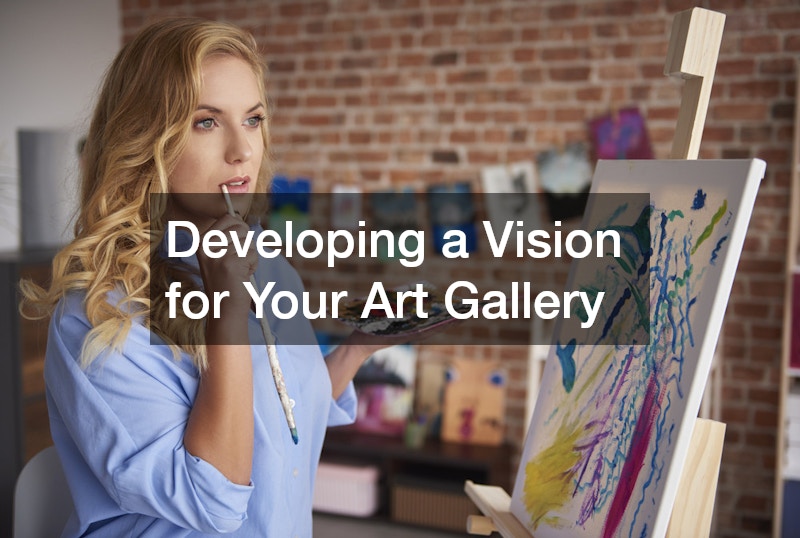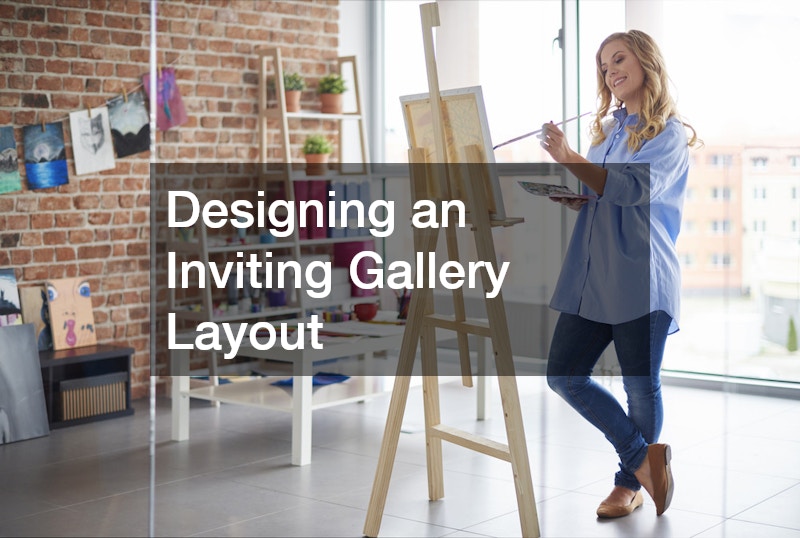Introduction
Opening an art gallery can be an exciting venture for those passionate about art and eager to share unique pieces with the public. However, it also requires strategic planning, a clear vision, and a thorough understanding of the industry. From finding the right space to curating exhibits that draw visitors, several key elements come into play when starting a successful gallery. Understanding and following essential art gallery guidelines will help you navigate the complexities of running a gallery, ensuring that your space not only stands out but thrives. With the right approach, you can build a gallery that fosters connections between artists and collectors while contributing to the local art scene.
In addition to fostering a community around art, setting up an art gallery involves many technical and logistical considerations. Each step of the process, from establishing your gallery’s identity to managing daily operations, can be enhanced by following best practices and learning from industry experts. In this guide, we will explore art gallery guidelines that are crucial for anyone looking to open a new gallery, helping you transform your vision into a reality.
Developing a Vision for Your Art Gallery

The first step in opening a successful gallery is developing a clear vision. This vision will serve as the foundation for everything your gallery represents, including the types of art you’ll exhibit, the audience you aim to attract, and the overall aesthetic of your space. It’s important to define whether your gallery will specialize in a particular medium, such as contemporary art, photography, or sculptures, or if it will showcase a diverse range of works. Your vision should reflect your personal passion for art while also filling a gap in the local art scene. Establishing a cohesive vision from the outset will help guide your decisions moving forward and keep your gallery focused on its goals.
To ensure that your gallery’s vision is properly realized, consulting small business attorneys can be a vital part of the process. They can help you formalize your business structure, protecting your interests and ensuring that your gallery operates smoothly from a legal standpoint. Whether you’re drafting contracts with artists, negotiating leases for gallery space, or establishing intellectual property rights, small business attorneys provide essential support. By incorporating their expertise into your planning, you can build a solid legal foundation that aligns with your overall vision and long-term success.
Securing a Suitable Location for the Gallery
Finding the right location for your art gallery is critical to its success. The gallery should be easily accessible, preferably in an area known for attracting art enthusiasts, tourists, or collectors. When scouting for a location, you’ll need to consider factors such as foot traffic, proximity to complementary businesses like cafes or bookstores, and the overall vibe of the neighborhood. In many cases, establishing your gallery in an emerging art district or urban area known for creativity can provide added visibility. These art gallery guidelines emphasize the importance of location in drawing in a steady stream of visitors, helping to build your gallery’s reputation.
On a more practical level, securing a location may also involve working with a construction dumpster rental service if you need to renovate the space. Older or unconventional buildings might require significant refurbishments to create the perfect setting for your art displays. During this process, renting a construction dumpster can help efficiently manage debris and waste, ensuring that your renovation is completed smoothly. By addressing these logistical details early on, you can create a functional and visually appealing gallery space that reflects your artistic vision while adhering to local regulations.
Curating Art Exhibits to Attract Visitors

Curating compelling and diverse exhibits is one of the most exciting aspects of running an art gallery, but it requires a deep understanding of both your audience and the artists you feature. Successful galleries create exhibitions that engage viewers, spark conversations, and appeal to different tastes and interests. Whether you focus on contemporary pieces, emerging artists, or a mix of mediums, the key is to curate exhibits that stand out and offer something unique. Rotating exhibits regularly and featuring fresh perspectives will also keep your gallery dynamic and encourage repeat visits. Following art gallery guidelines on exhibit curation ensures that your gallery remains relevant and appealing to a wide audience.
To create these standout exhibits, consider collaborating with local businesses such as a furniture shop to enhance the aesthetic appeal of your space. Carefully chosen furniture can elevate the overall gallery experience by complementing the artwork and making visitors feel comfortable as they explore your exhibits. High-quality, thoughtfully arranged seating areas or stylish decor can create a welcoming atmosphere that encourages guests to stay longer, enjoy the artwork, and potentially make a purchase. Partnering with a furniture shop helps transform your gallery into a cohesive visual experience that leaves a lasting impression on visitors.
Building Relationships With Local Artists
Establishing and maintaining strong relationships with local artists is fundamental to the success of any art gallery. These relationships allow you to showcase a diverse array of talent while supporting the creative community in your area. By building a reputation as a gallery that values collaboration with local artists, you’ll attract both emerging and established talent eager to showcase their work. Hosting artist talks, studio visits, and collaborative events can help foster these relationships while creating deeper engagement with the public. Following art gallery guidelines that prioritize artist collaboration not only enhances your exhibits but also strengthens your gallery’s standing within the art community.
On a more practical level, developing these relationships may involve sourcing materials from a metal supply warehouse, particularly if you’re showcasing sculpture or mixed-media works. Artists who work with metal or other industrial materials may need specific resources for their pieces, and by building connections with suppliers, you can offer artists logistical support. This collaboration can result in more impressive and unique exhibits while allowing you to feature distinctive art forms that set your gallery apart. Supporting artists in this way also strengthens your relationships, leading to future partnerships and innovative exhibits.
Designing an Inviting Gallery Layout

The layout of your gallery is crucial to how visitors experience the art you showcase. A well-thought-out design allows guests to move through the space naturally, encouraging them to engage deeply with the exhibits. Key factors include lighting, flow, and spacing between pieces, all of which contribute to a gallery’s overall atmosphere. Ensuring that the layout is accessible and intuitive for both casual visitors and art collectors is essential. Art gallery guidelines emphasize that the physical design of the gallery should be in harmony with the art itself, creating an environment where each piece can be appreciated to its fullest.
To achieve the perfect gallery layout, enlisting professional painters to customize the interior can significantly enhance the visual appeal of your space. The right paint colors, textures, and finishes can draw attention to the artwork while creating a polished, cohesive look. Professional painters can help you achieve subtle distinctions between different exhibit areas, guiding visitors through the space in a seamless manner. A carefully crafted layout, enhanced by expert painting, ensures that your gallery feels welcoming, organized, and conducive to enjoying the art you display.
Creating a Marketing Strategy for the Gallery
Marketing plays a critical role in ensuring the success of any art gallery, as it helps bring attention to the exhibits and reach potential art buyers. A well-crafted marketing strategy should include both digital and traditional approaches, utilizing social media platforms, email newsletters, and partnerships with local media outlets. Regularly promoting new exhibits, artist features, and events helps keep your audience engaged and aware of upcoming opportunities to visit the gallery. Adhering to art gallery guidelines for marketing will help you maintain a consistent presence and connect with art enthusiasts, collectors, and the general public.
One often-overlooked aspect of a gallery’s marketing strategy is improving indoor air quality to enhance the visitor experience. Poor air quality can affect how long people are comfortable staying in the gallery, impacting how they perceive the art and their overall experience. By ensuring proper ventilation and air filtration, you create a healthier, more inviting environment that encourages visitors to linger longer and return for future exhibits. A focus on improving indoor air quality as part of your marketing strategy can differentiate your gallery as a space that prioritizes both art and visitor comfort.
Hosting Opening Events to Gain Attention

Hosting opening events is one of the most effective ways to create buzz and draw attention to your new art gallery. Grand openings, artist receptions, and exhibit launch parties provide opportunities for the public to engage with the artwork in a lively, social setting. These events are excellent for attracting media coverage, local influencers, and potential buyers, helping to build excitement around your gallery. According to art gallery guidelines, hosting well-organized and memorable events can significantly boost visibility and strengthen connections with the local community.
Ensuring the comfort of your guests at these events is essential, and one important consideration is air conditioning installation. Hosting a crowded gallery event can lead to uncomfortable temperatures, which may detract from the overall experience. By installing reliable air conditioning, you can maintain a comfortable climate, allowing guests to fully enjoy the art and interact with others. A comfortable environment makes your events more enjoyable, helping to ensure that attendees have a positive impression of your gallery and are more likely to return for future exhibits.
Managing the Day-to-Day Operations of the Gallery
Operating an art gallery involves numerous day-to-day tasks, from maintaining the space to managing finances, inventory, and staff. Ensuring that everything runs smoothly behind the scenes is essential for creating a professional and efficient gallery environment. Proper management helps maintain consistency in how the gallery functions and provides a positive experience for both visitors and artists. Adhering to art gallery guidelines for operational efficiency is crucial for ensuring the long-term success of your business.
One practical aspect of managing operations is working with a roll off container rental service for waste disposal, particularly during renovations or exhibit changes. Galleries often need to manage debris from exhibit setups, packaging materials, or renovations, and having an efficient waste removal system is essential for keeping the gallery clean and presentable. A roll off container rental provides a convenient solution for managing large amounts of waste, ensuring that your gallery remains a pristine space for showcasing art while maintaining operational efficiency.
Building a Loyal Customer Base Through Engagement
Building a loyal customer base is essential for the long-term success of any art gallery. This requires more than just showcasing great artwork—it involves developing strong relationships with visitors, collectors, and the local community. Regular communication through email newsletters, social media updates, and exclusive invitations to gallery events can help keep your audience engaged. Offering personalized experiences, such as private tours or art consultations, can also foster loyalty among collectors. Following art gallery guidelines on customer engagement will enable you to cultivate a network of repeat visitors and art buyers who feel connected to your gallery’s mission.
Additionally, making sure your gallery is accessible and comfortable for all visitors is key to building a loyal customer base. For instance, investing in an elevator maintenance service ensures that your gallery is easily navigable for individuals with mobility challenges. Regular maintenance keeps your elevator functioning smoothly, allowing all guests to enjoy the exhibits without any accessibility issues. Prioritizing these details demonstrates your commitment to providing an inclusive and welcoming experience, encouraging visitors to return time and again.
Expanding Your Gallery’s Presence Through Collaborations
Collaborating with other businesses, artists, and organizations is a powerful way to expand your gallery’s presence and reach a broader audience. Partnerships can open doors to new opportunities, such as co-hosting events, participating in community projects, or cross-promoting with local businesses. Collaborating with complementary organizations like museums, art schools, or cultural institutions can also enhance your gallery’s credibility and attract visitors from a wider demographic. Following art gallery guidelines for effective collaboration can help you leverage partnerships to grow your gallery’s reputation and foster a vibrant arts community.
One area where collaboration can be particularly beneficial is in maintaining the gallery’s infrastructure. For instance, working with a commercial roof service can ensure that your gallery remains in top condition, protecting both the art and the visitors. Collaborating with trusted service providers allows you to focus on curating and expanding your exhibits while ensuring the gallery’s physical space remains secure and well-maintained. These partnerships not only keep your operations running smoothly but also demonstrate your gallery’s commitment to quality and professionalism.
Conclusion
Opening a successful art gallery involves more than just displaying beautiful artwork. It requires careful planning, strategic partnerships, and a deep understanding of both the art world and the local community. By following essential art gallery guidelines, you can create a space that reflects your unique vision while attracting visitors, collectors, and artists alike. From developing a clear gallery vision to curating exceptional exhibits, each step of the process contributes to the overall success of your gallery.
As you move forward, remember the importance of operational efficiency, marketing strategies, and collaborations that enhance your gallery’s presence. Balancing creativity with practical considerations like accessibility, event planning, and infrastructure management ensures that your gallery not only thrives but becomes a cornerstone of the local arts scene. With the right approach and dedication, you can build a gallery that fosters connections, inspires visitors, and stands the test of time.

